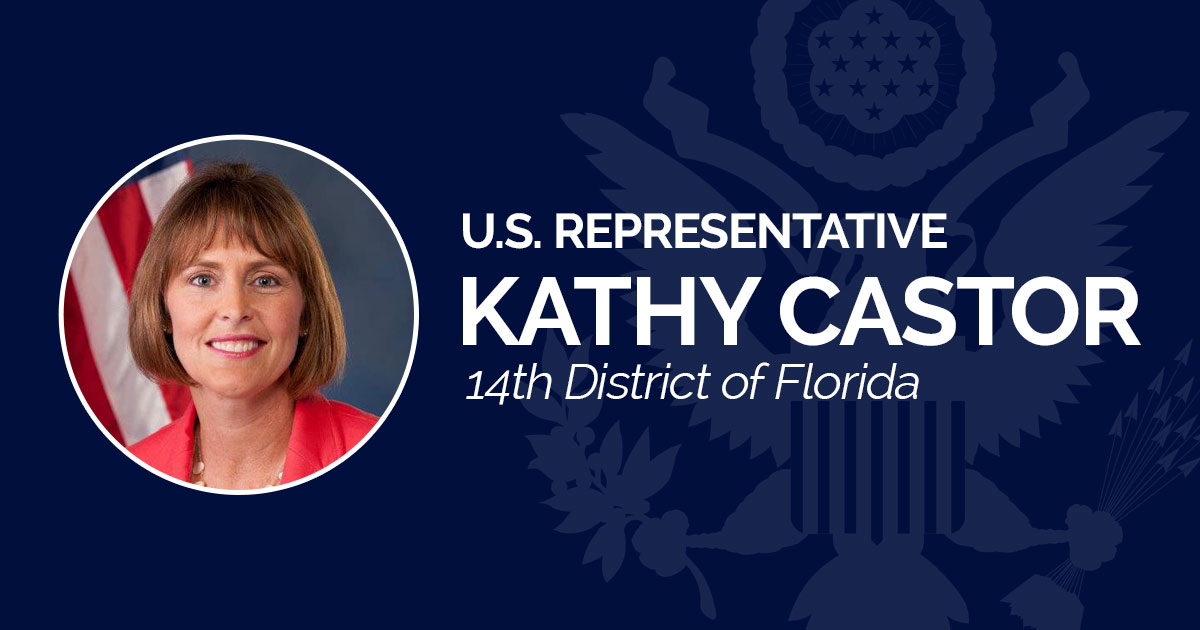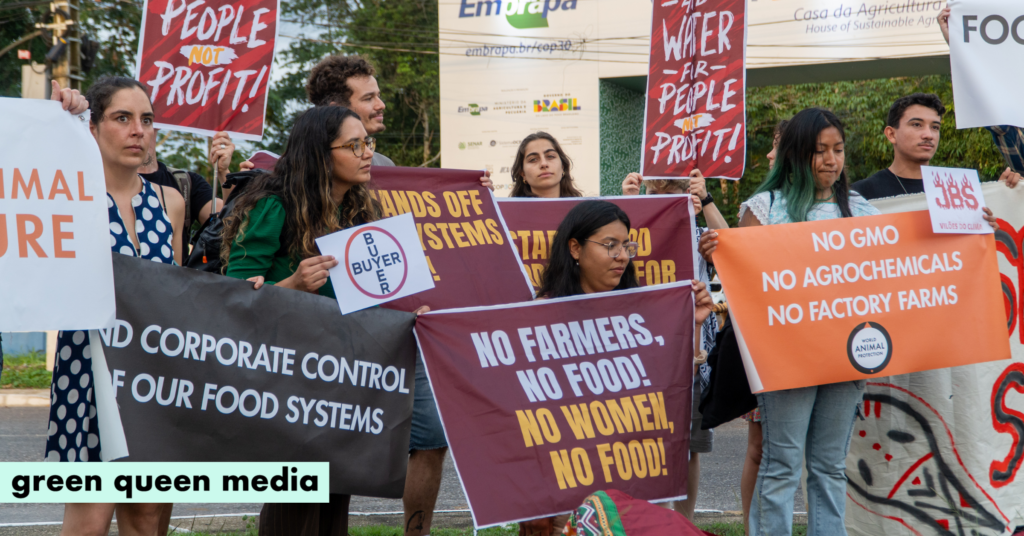Contributor: Trump’s EPA proposes to end the U.S. fight against climate change – Los Angeles Times

Report on the Proposed Rescission of the EPA’s Greenhouse Gas Endangerment Finding and its Implications for Sustainable Development Goals
Introduction
A recent policy proposal by the Environmental Protection Agency (EPA) seeks to rescind the 2009 “endangerment finding,” a scientific determination that greenhouse gases (GHGs) pose a threat to public health and welfare. This action represents a fundamental challenge to the entire framework of federal climate regulation in the United States. The proposed rollback directly contravenes the principles and objectives of the United Nations Sustainable Development Goals (SDGs), particularly those related to environmental stewardship, public health, and economic stability.
Analysis of the Proposed Policy and its Conflict with Sustainable Development
The proposal aims to dismantle the legal and scientific cornerstone that underpins all major federal climate rules, including emissions standards for vehicles, power plants, and industrial facilities. This move signals a retreat from national climate commitments and creates significant risks to achieving global sustainability targets.
Direct Opposition to SDG 13: Climate Action
The primary objective of the proposed policy is to eliminate the federal government’s authority to regulate greenhouse gases, which is in direct opposition to SDG 13 (Climate Action). The endangerment finding serves as the most critical tool for the U.S. to meet its climate obligations.
- The policy repudiates the national responsibility to combat climate change and its impacts.
- It seeks to paralyze federal climate action, delaying necessary mitigation and adaptation efforts.
- By arguing that U.S. emissions are too small a fraction of the global total to warrant regulation, the proposal undermines the principle of collective action essential for addressing a global crisis like climate change.
Undermining Health, Energy, and Economic Goals
The repercussions of this policy extend across multiple SDGs, threatening progress in public health, clean energy, and sustainable economic development.
- SDG 3: Good Health and Well-being: The original 2009 finding was based on scientific evidence linking GHGs to adverse health outcomes, including worsening air quality and the spread of pathogens. Rescinding this finding ignores established health risks and jeopardizes public well-being.
- SDG 7: Affordable and Clean Energy: The proposal creates regulatory uncertainty that puts at risk billions of dollars invested by power companies in renewable energy. It hinders the transition to clean energy and cedes leadership in technologies like solar and wind power to other nations, such as China and European countries.
- SDG 9: Industry, Innovation, and Infrastructure: Stable federal regulations are crucial for long-term industrial planning and global competitiveness. This policy rollback disrupts the market, discourages investment in green innovation, and risks the U.S. falling further behind in the manufacturing of clean technologies like electric vehicles and solar panels.
- SDG 11: Sustainable Cities and Communities: Climate change exacerbates risks to communities through more intense storms, deadly heat waves, and destructive wildfires. By halting climate action, the policy undermines efforts to make cities and human settlements inclusive, safe, resilient, and sustainable.
Challenge to Legal and Scientific Institutions
The proposal attacks the established institutional framework for environmental protection, a core tenet of SDG 16 (Peace, Justice, and Strong Institutions). It attempts to dismantle a policy built on a Supreme Court ruling (Massachusetts v. EPA) and a robust scientific consensus.
Contrived Legal and Scientific Arguments
The administration’s justification for the rescission relies on a series of arguments that conflict with mainstream legal and scientific understanding.
- Legal Justification: It claims GHGs are not pollutants under the Clean Air Act because their effects are global, not local—an argument that contradicts the Supreme Court’s 2007 ruling.
- Scientific Justification: The proposal dismisses the consensus of major scientific bodies like the IPCC and the National Climate Assessment. Instead, it relies on a report commissioned from a small group of scientists with outlier views, who assert that global warming may be beneficial. This approach undermines the role of credible, transparent scientific assessment in policymaking.
- Economic Justification: The policy’s cost-benefit analysis is skewed, emphasizing the costs of regulation while ignoring the significant public health and economic benefits derived from mitigating climate change.
Conclusion: Long-Term Risks and Global Standing
The proposed reversal of the endangerment finding constitutes a significant setback for U.S. climate policy and its commitment to the Sustainable Development Goals. While the scientific reality of climate change remains unchanged, the policy introduces a period of inaction that will result in quantifiable damage to the environment, public health, and the economy. The delay in responsible climate action not only exacerbates climate risks but also damages the nation’s competitive position in the burgeoning global clean energy market, thereby failing to uphold the principles of SDG 12 (Responsible Consumption and Production) and SDG 17 (Partnerships for the Goals).
Relevant Sustainable Development Goals (SDGs)
- SDG 3: Good Health and Well-being
- SDG 7: Affordable and Clean Energy
- SDG 9: Industry, Innovation and Infrastructure
- SDG 13: Climate Action
- SDG 16: Peace, Justice and Strong Institutions
Identified SDG Targets
-
SDG 13: Climate Action
- Target 13.2: Integrate climate change measures into national policies, strategies and planning. The article directly discusses the dismantling of national climate policy. It states the administration’s proposal would “rescind its 2009 ‘endangerment finding’ — the scientific conclusion that greenhouse gases contribute to global warming,” which is described as “the foundation of all federal climate policy” and underpins “car and truck emissions standards, power plant regulations and limits on oil and gas facilities.” This action represents a direct reversal of integrating climate measures into national policy.
-
SDG 3: Good Health and Well-being
- Target 3.9: By 2030, substantially reduce the number of deaths and illnesses from hazardous chemicals and air, water and soil pollution and contamination. The article connects greenhouse gases to negative health outcomes, noting the original endangerment finding concluded they “harm human health and well-being.” It also lists climate impacts such as “worse air quality,” “extreme weather events,” “spreading drought and more food- and water-borne pathogens,” and “deadly” heat waves. The rollback of regulations to limit these gases works against this target.
-
SDG 7: Affordable and Clean Energy
- Target 7.2: By 2030, increase substantially the share of renewable energy in the global energy mix. The article highlights that the administration’s actions create “regulatory uncertainty” that “puts at risk” the billions that “power companies have invested in renewable energy.” It also contrasts the U.S. situation with other nations, stating, “China now dominates solar panel and electric vehicle production; Europe leads in offshore wind,” implying a failure to keep pace with increasing the share of renewable energy.
-
SDG 9: Industry, Innovation and Infrastructure
- Target 9.4: By 2030, upgrade infrastructure and retrofit industries to make them sustainable, with increased resource-use efficiency and greater adoption of clean and environmentally sound technologies and industrial processes. The article discusses the regulations aimed at making industries more sustainable, such as “car and truck emissions standards, power plant regulations and limits on oil and gas facilities.” The attempt to remove these regulations is a direct challenge to the goal of upgrading industries and adopting cleaner technologies.
-
SDG 16: Peace, Justice and Strong Institutions
- Target 16.6: Develop effective, accountable and transparent institutions at all levels. The article critiques the institutional process behind the policy change. It mentions the administration “disbanded the National Climate Assessment, a congressionally mandated periodic review conducted by hundreds of climate scientists” and instead relied on a report “written by five handpicked scientists known for their outlier views.” This suggests a move away from transparent, accountable, and science-based institutional processes.
Implied Indicators for Measuring Progress
-
SDG 13: Climate Action
- Indicator: Existence and enforcement of national climate policies. The article is centered on the “endangerment finding” as the cornerstone of U.S. climate policy. The existence, scope, and enforcement of this finding and the regulations it underpins (e.g., emissions standards for cars, power plants) serve as a direct indicator of national climate action.
- Indicator: Greenhouse gas emissions levels. The entire article is about the regulation of “greenhouse gases.” The quantity of “U.S. emissions” and whether they are being limited is the fundamental metric for measuring progress.
-
SDG 3: Good Health and Well-being
- Indicator: Public health impacts attributable to climate change. The article implies this indicator by mentioning climate-related health risks such as “worse air quality,” “deadly” heat waves, and “food- and water-borne pathogens.” Tracking the incidence of these events would measure progress.
-
SDG 7: Affordable and Clean Energy
- Indicator: Investment in renewable energy. The article explicitly mentions that “Power companies have invested billions in renewable energy,” which is now at risk. The level of this investment is a clear indicator of progress towards a clean energy transition.
- Indicator: Share of global manufacturing in clean energy technologies. This is implied when the article states, “China now dominates solar panel and electric vehicle production; Europe leads in offshore wind.” The U.S. share of production in these areas is an indicator of its competitiveness and progress.
-
SDG 16: Peace, Justice and Strong Institutions
- Indicator: Use of broad scientific consensus in policymaking. The article contrasts the reliance on a “commissioned report by a closed group” with the findings of the “National Climate Assessment,” the “National Research Council,” and the “U.N. Intergovernmental Panel on Climate Change.” Whether policy is based on broad, mandated scientific reviews versus small, handpicked groups is an indicator of institutional integrity.
Summary of Findings
| SDGs | Targets | Indicators |
|---|---|---|
| SDG 13: Climate Action | 13.2: Integrate climate change measures into national policies, strategies and planning. | Existence and enforcement of national climate policies (e.g., the “endangerment finding”); Levels of national greenhouse gas emissions. |
| SDG 3: Good Health and Well-being | 3.9: Substantially reduce deaths and illnesses from hazardous chemicals and air, water and soil pollution. | Incidence of public health impacts attributable to climate change (e.g., illnesses from poor air quality, deadly heat waves). |
| SDG 7: Affordable and Clean Energy | 7.2: Increase substantially the share of renewable energy in the global energy mix. | Level of investment in renewable energy; National share of global manufacturing in clean energy technologies (solar, wind, EVs). |
| SDG 9: Industry, Innovation and Infrastructure | 9.4: Upgrade infrastructure and retrofit industries to make them sustainable. | Enforcement of emissions standards for key industries (automotive, power generation, oil and gas). |
| SDG 16: Peace, Justice and Strong Institutions | 16.6: Develop effective, accountable and transparent institutions at all levels. | Reliance on broad, independent, and mandated scientific assessments (like the National Climate Assessment) in policymaking. |
Source: latimes.com

What is Your Reaction?
 Like
0
Like
0
 Dislike
0
Dislike
0
 Love
0
Love
0
 Funny
0
Funny
0
 Angry
0
Angry
0
 Sad
0
Sad
0
 Wow
0
Wow
0











































































